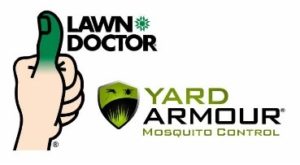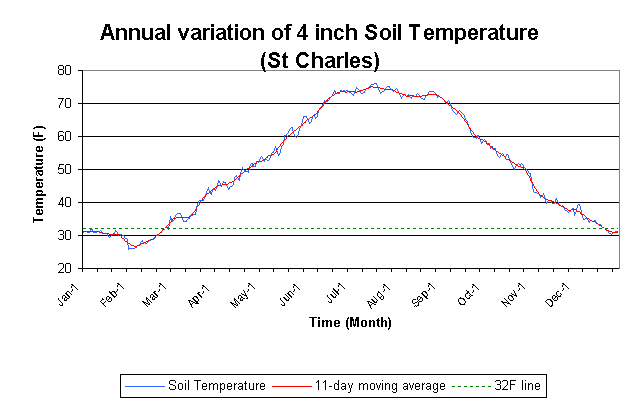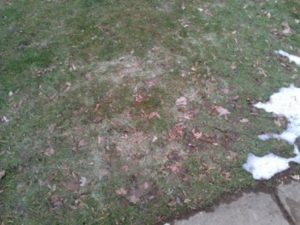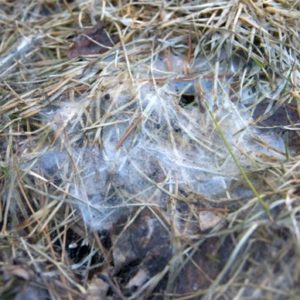
Are You Ready for Spring??….
Lawn Doctor Is!

With the heavy snow cover this winter, we can wonder if it will ever stop snowing and if the snow will ever melt.
We know that Spring will be here before we know it….
Lawn Doctor is getting our schedules ready and our materials and equipment prepped.
If you’d like more information on how to help your lawn and landscape recover from the winter, please read our newsletter below
If you’d like to find out more about how we can help you this year, please feel free to contact us.
Lawn Doctor Turf Alert
Late Winter/Early Spring 2021
Spring is coming!
I know that we are all yearning for spring and it seems like we have had so much snow that it will NEVER be gone. The good news is that we know that it WILL melt and Spring will be here before we know it!
The Illinois State Water Survey compiles data on the average soil temperatures over the years by date: https://www.isws.illinois.edu/statecli/Soil-Temperature/soil_temperature.htm
As you can see below, for our area, we will start to see the soil warming trend starting in late March into April, even if we still see some additional cold temperatures or more snow.

What are the effects of all the snow on your lawn and landscapes?
While many are definitely tired of the snowfall, snow actually has several benefits for your yard and your plants.
The biggest benefit of a good snow cover is that the snow functions as an excellent insulator of the soil. In previous winters with very little snow, the very cold temperatures froze the soil deeper and deeper, which led to damage of root systems of trees and shrubs, and damage to uncovered plants.
The insulation effect of snow also helps protect perennials, bulbs, ground covers, and other plantings from alternating freeze/thaw cycles.
Without snow, milder temperatures and the sun could warm the soil surface, leading to damage from soil heaving, which can break roots and dry out plant parts.
The snow cover has also helped to conserve soil moisture over the winter.
But there are some concerns about all this snow as we move into Spring.
We will worry about the following issues as the snow melt occurs and the turf starts to wake up:
- Salt damage and plow damage to the turf near driveways and sidewalks
- Snow mold- this will be a significant concern this spring. You can read more here: https://turf.purdue.edu/snow-mold-damage/ and see below for some tips to help. In most cases, fungicides are NOT necessary or appropriate.
- Vole (field mouse) damage is expected to be significant due to the snow cover. See more info here: https://www.agry.purdue.edu/turfnew/tips/2007/voles.htm and tips below.
- While “Winterkill” of the turf from desiccation (drying out), direct low temperature damage, and ice encasement should not be as severe due to the snow cover this year, we may still see issues with crown hydration during the coming months. You can read more about these phenomena here: https://extension.psu.edu/winterkill-of-turfgrasses. (This will be a big issue in Southern states with warm-season grass. If you have friends or family that have been hit by the cold in the south, you can share this article with them: https://hgic.clemson.edu/winter-damage/ & https://gardeningsolutions.ifas.ufl.edu/care/weather/treating-cold-damage.html)
Important tips for your lawn and landscape going into Spring.
- Protect the Lawn During the Last Weeks of Winter – While we are all tired of the snow and, in many cases, we are running out of places to put it… TRY to protect your grass from regular traffic and snow piles through the last stretch of the season. Keep your driveway, sidewalks and paths clear of snow so that people have a safe place to walk. When possible, AVOID shoveling snow onto the lawn or making snow piles that get in the way, forcing people to trample down the grass.
- Re-distribute Snow Piles – As air and soil temperatures rise, break up piles of ice and spread the snow around to help it melt away quicker. The existing turf and new grass growth can easily be damaged by the pressure from feet or piled snow. In addition, piles of snow take longer to melt and can block the grass from getting those first warm rays of sun in the early spring. The matted down grass with excess moisture can be a prime area for snow mold and can result in the grass taking longer to turn green and start growing.
- Rake to clear debris & help air circulation – It will be common to see matted down, brown dormant grass, along with debris and dead leaves once the snow is gone. Lightly rake the lawn to help perk up the turf to break up matted down areas and improve airflow to the surface of the blades. You can carefully clear away leaves and dead grass using a regular leaf rake, but make sure to wait until the ground has dried out and firmed up. Walking and working on the muddy turf can risk damage. Be gentle! Aggressive raking can pull fragile grass before it gets a chance to recover from dormancy and start to grow.
- Make your yard inhospitable to Voles– If you are seeing vole tracks in the turf, clear debris and leaf piles in the landscape beds and around trees where they may be hiding. Gently rake dead grass and chop up the tracks to disturb their pathways. In most cases the turf will recover fully.
- Gently brush heavy snow off shrubs – Heavy snow and ice can cause damage to shrubs. Roughly removing the snow and ice can cause branches to break off. As the temperatures warm up, use care to clear the snow from landscape plantings.
- Consider Spring Aeration – Aeration is always a good idea with our turf and clay soil but is even more important this year. The weight of the snow cover further compacts the soil which can compress roots and choke root growth. Mechanical Core Aeration and Liquid Aeration are both good options.
Please feel free to email or call with questions or concerns!
Thank you!
Kim & Dan Toth
(630) 406-8535
group969@lawndoctor.com
![]()
Proudly Serving the Western Suburbs
Batavia-Aurora
Wheaton-Winfield-Glen Ellyn
Naperville
Geneva-St. Charles
Downers Grove-Woodridge




